How To Make A Sourdough Starter in 5 Days
This post may contain affiliate links, please visit our privacy policy for details.
Have you ever taken a bite of bread and found yourself wondering if you could make something just as good if not better? This is the ultimate guide to show you how to make your very own Sourdough Starter using simple ingredients, no specialty equipment, and ready to use in just 5 days. I’ll also tell you how to maintain it for years to come! Sourdough starter can be used to make all your favorites, from biscuits to hamburger buns to an amazingly easy no knead bread. It’s my favorite kitchen “tool”!
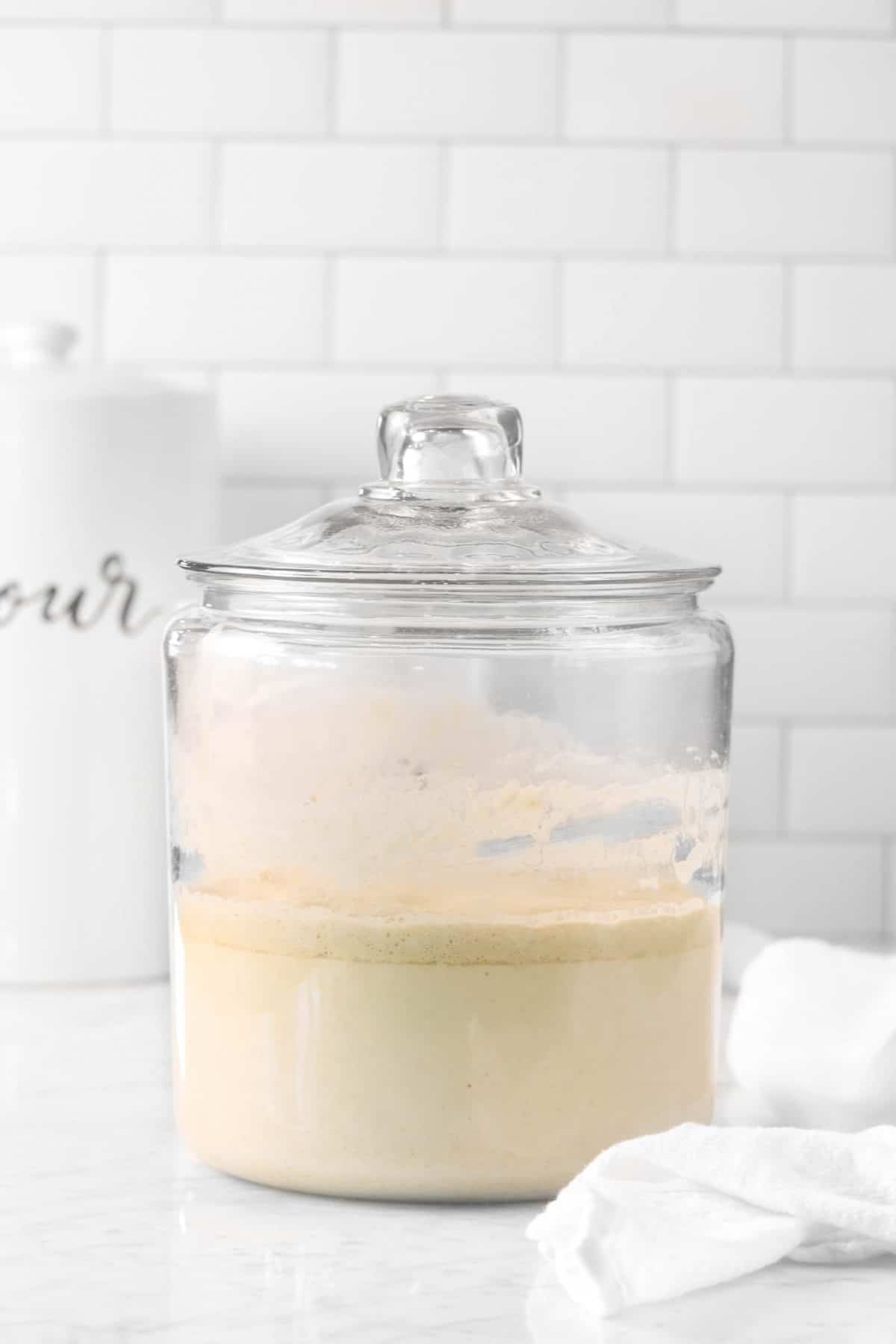
About The Recipe
Imagine a sourdough starter that can be made in less than 5 minutes a day for 5 days. That’s a total time of 25 minutes! Think about that! Over just a few short days, you can have at your fingertips the basis of so many wonderful recipes! You don’t even need yeast! It’s like a dream, right?
I made my first starter over 25 years ago. It was a really complicated process I found in a bread book somewhere, and boy could that thing could eat! It ate through an entire 5 pound bag of flour a day!
Needless to say, that was way too expensive to keep up.
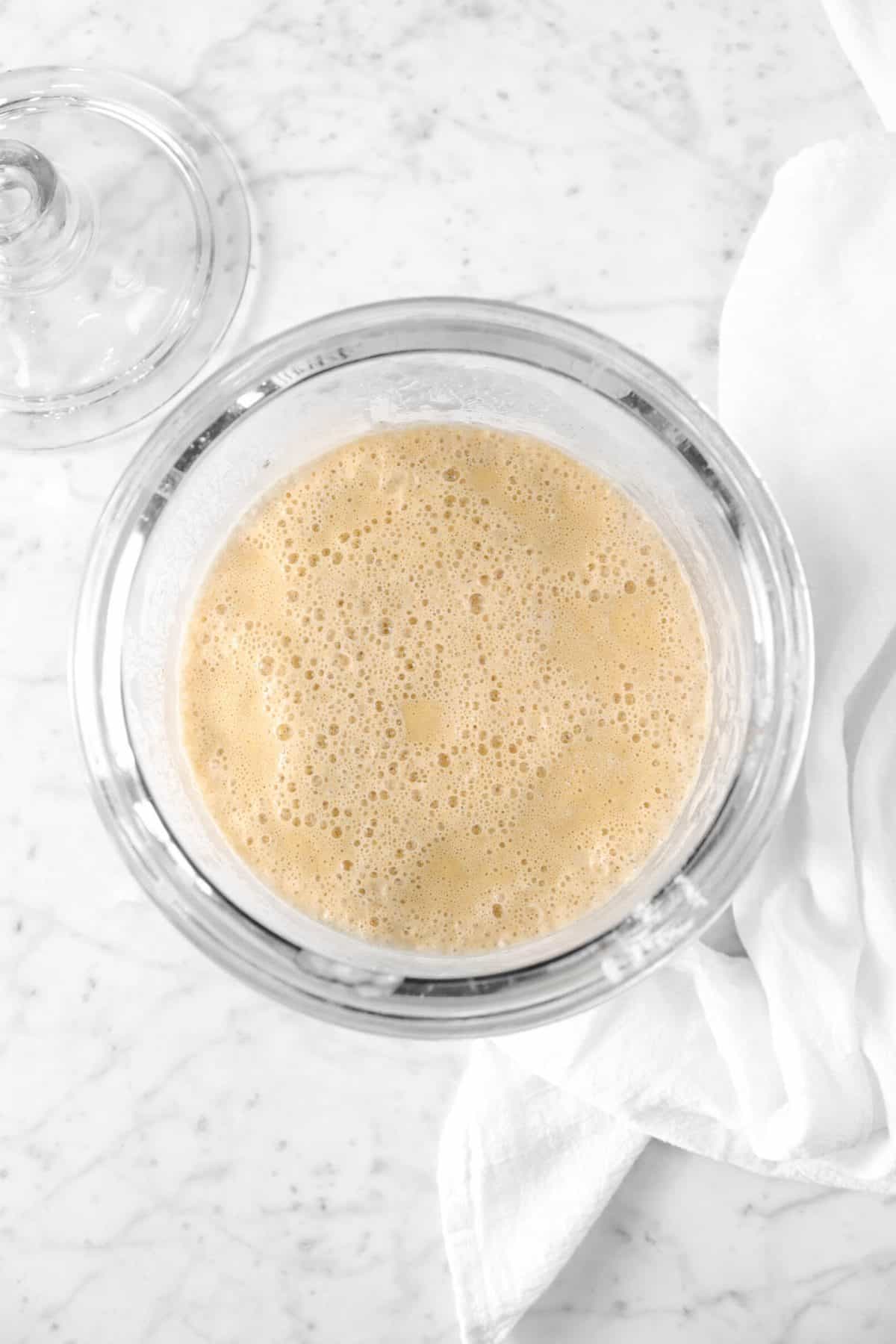
So, after a few years of tinkering, I came up with this method for making sourdough starter. I’ve had the one I use today for over 18 years now. It has moved with me from Mississippi to Florida to North Carolina to Texas!
Now, I’ve made a brand new starter using my new method for this post just so you can see how to make your very own. (Don’t worry, I still have the original.😉) I’m so excited for you to share my passion and learn to make things like Whole Wheat Sourdough Fig And Walnut Bread! I’ll even throw in a recipe for Soft Sourdough Pretzels.
Benefits To Making Your Own Sourdough Starter
- It’s super simple and only requires 3 ingredients.
- Healthier than store-bought bread and much more flavorful.
- Takes only a few minutes every day to take care of.
- This starter is ready to use in only 5 DAYS!
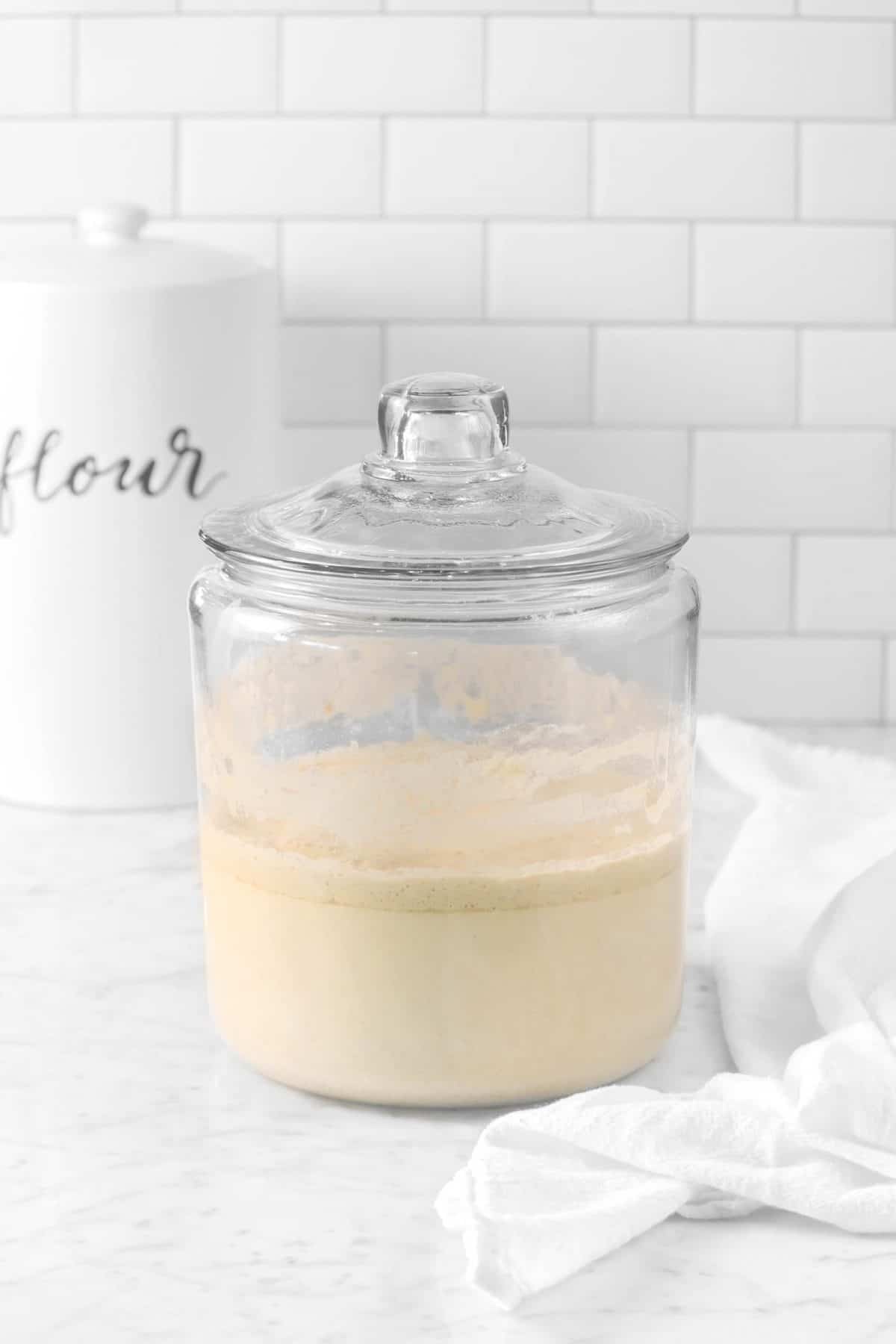
Equipment Needed
Ingredients To Make The Perfect Sourdough Starter (& Why!)
- Whole Wheat Flour – This is the only flour that works to build this starter. You need the extra push (nutrients and microorganisms) from the whole grains.
- Water – Regular tap water will work just fine in this recipe, but if you have a lot of chemicals in your water, you may want to opt for bottled.
- Barley Malt – Helps attract and feed the wild yeast (the magic ingredient) that makes your sourdough rise.
- Bread Flour – This is used to feed the starter after the first day.
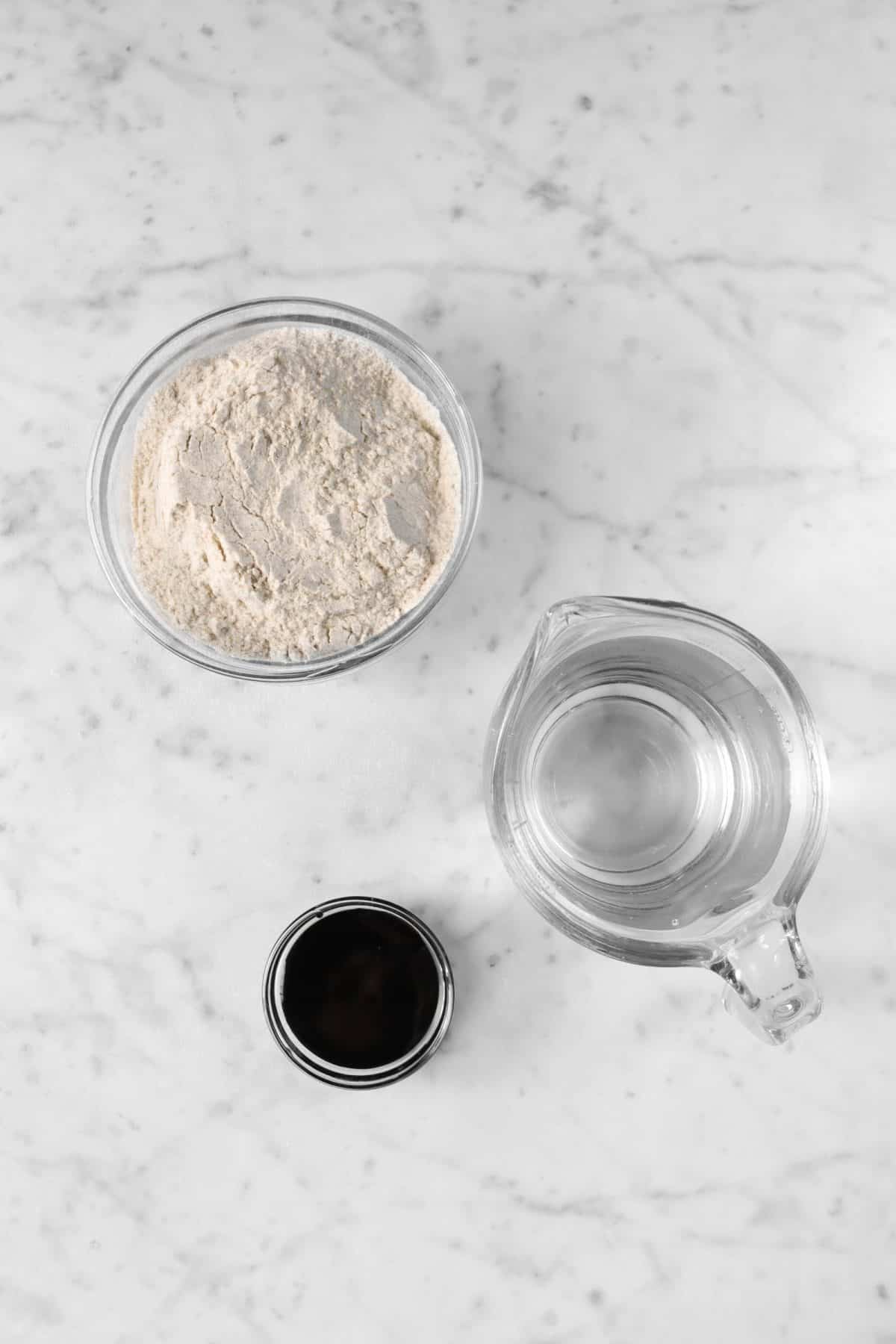
How To Make A Sourdough Starter (Step-by-Step!)
Start by combining the whole wheat flour, water, and malt in your clean jar.
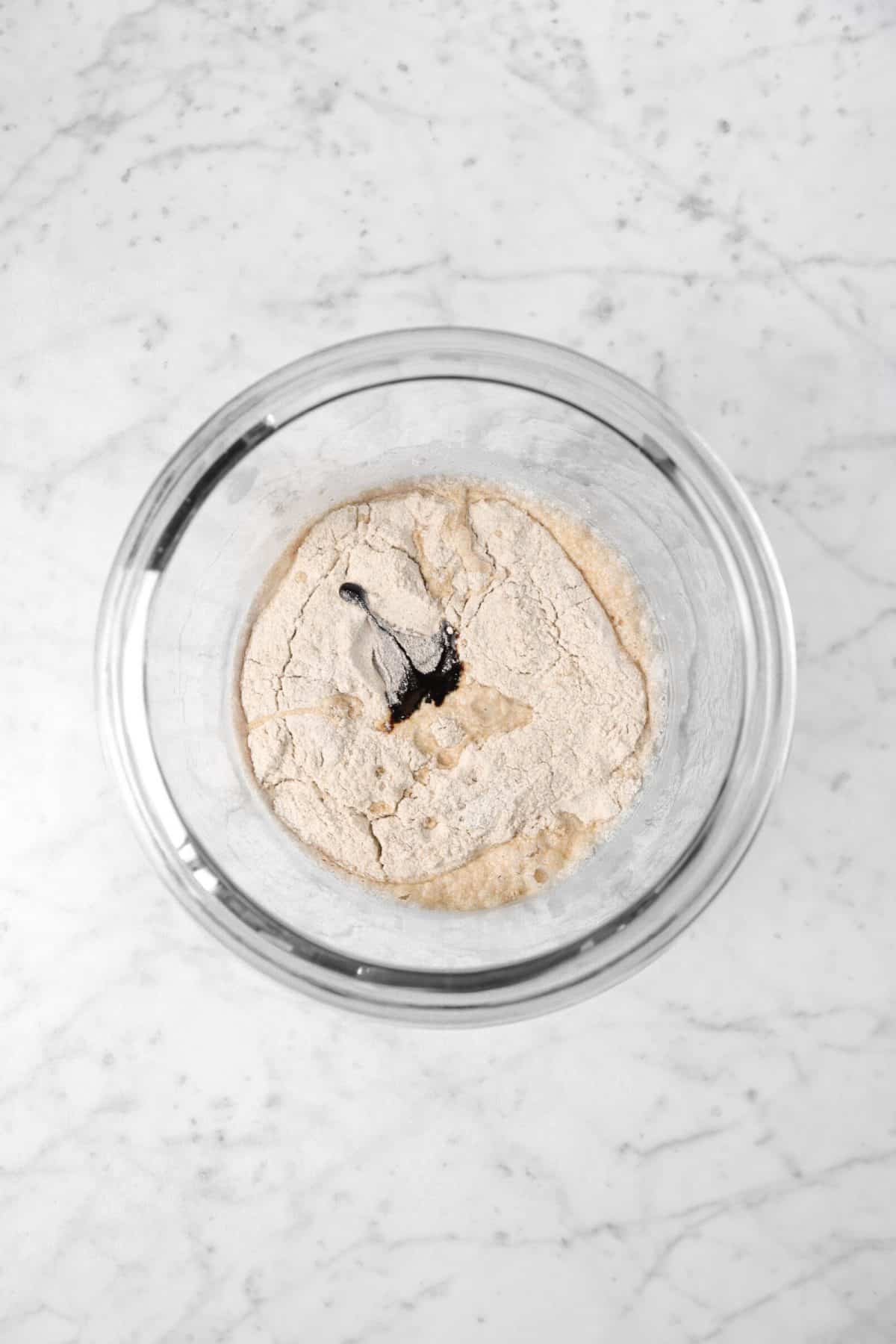
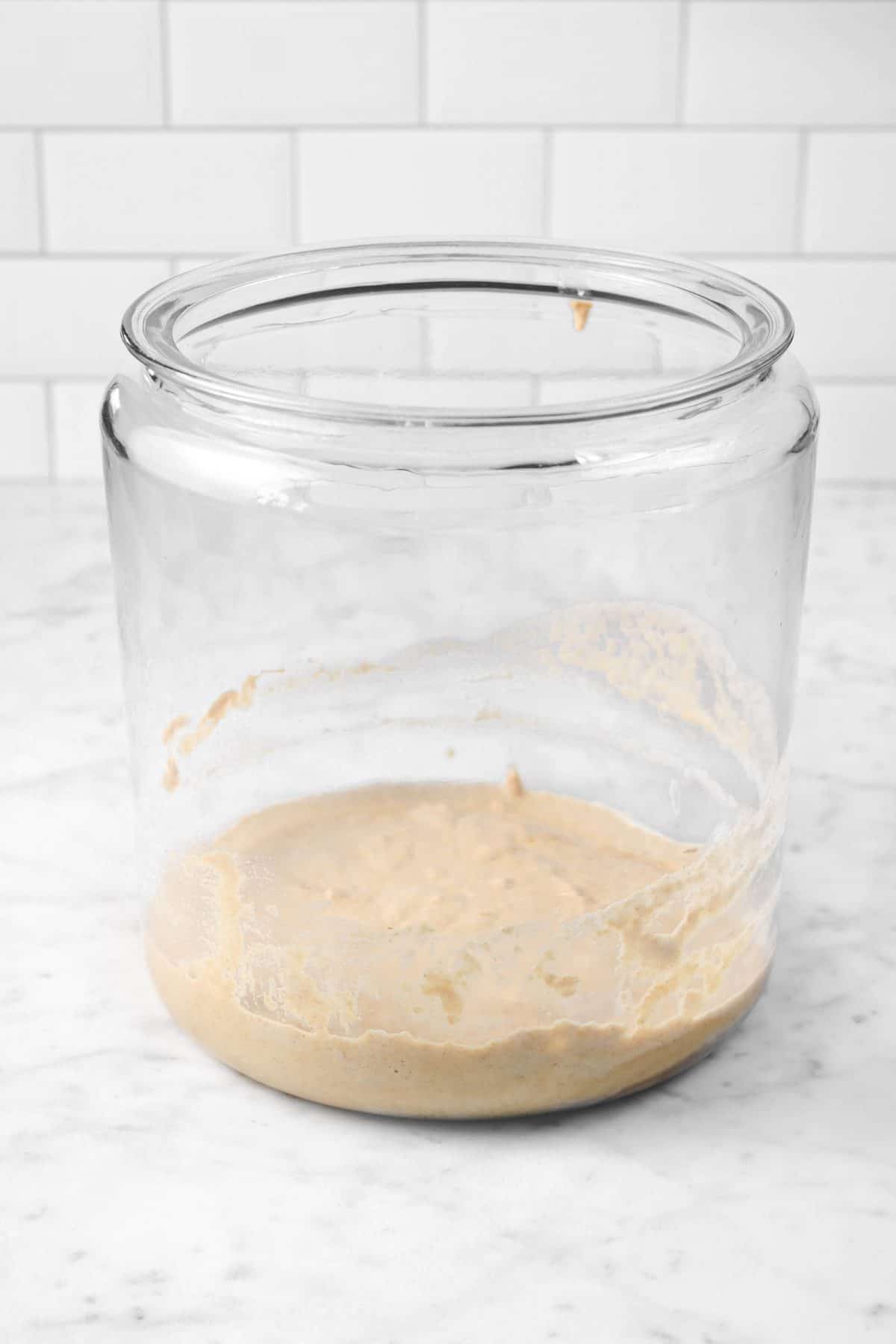
Let it sit out on the counter overnight! The next day, add bread flour, barley malt, and water. Mix together and let it sit once again!
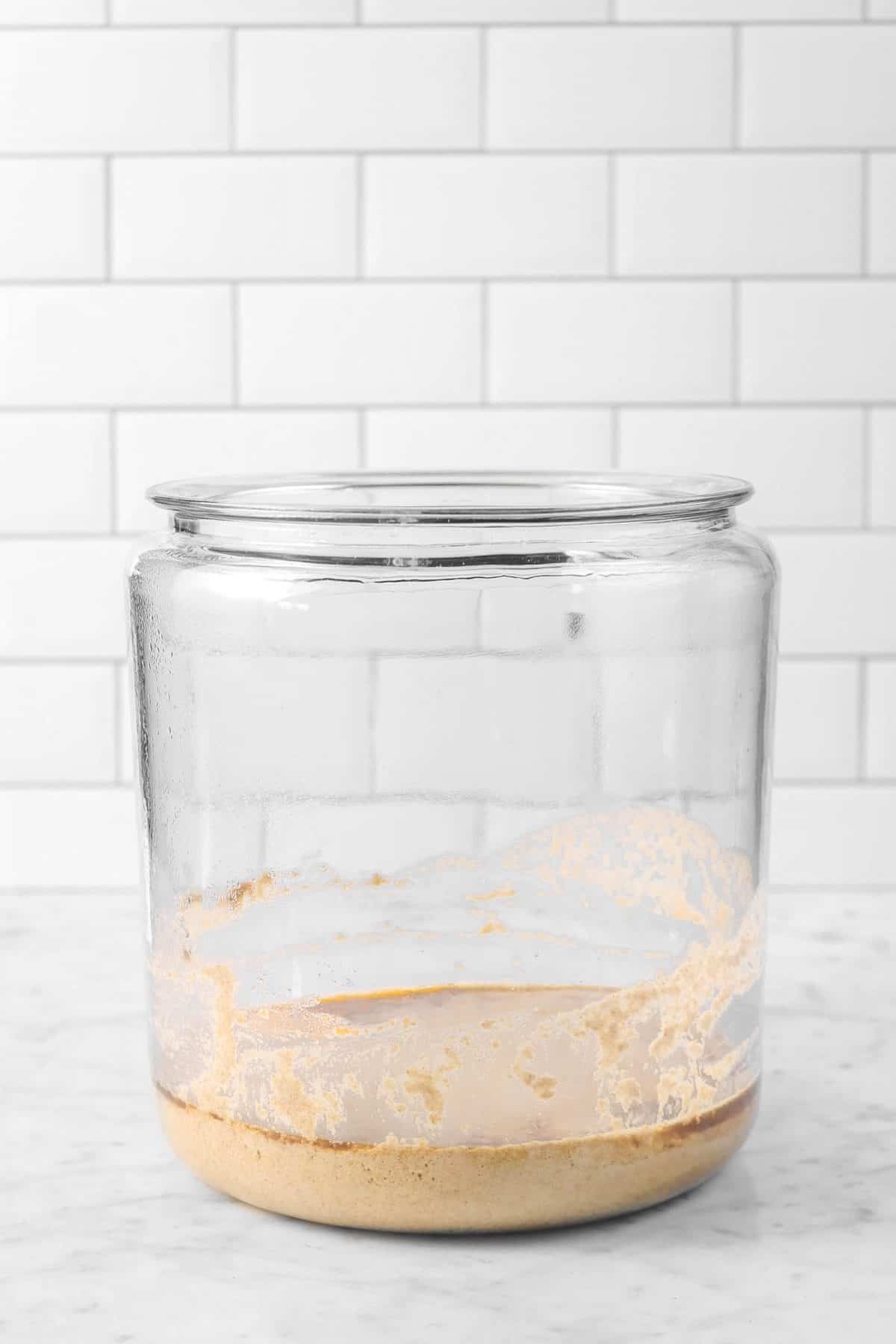
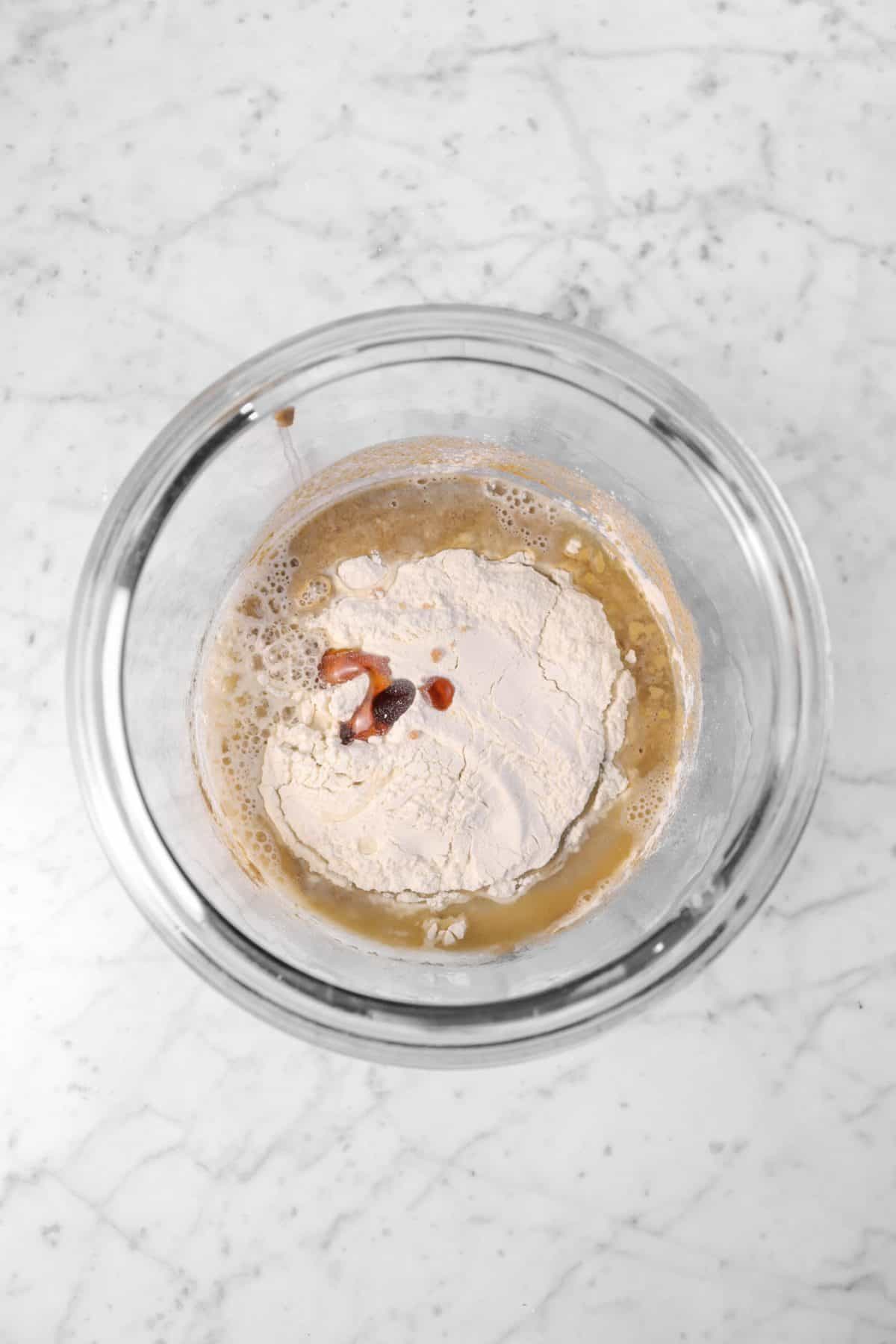
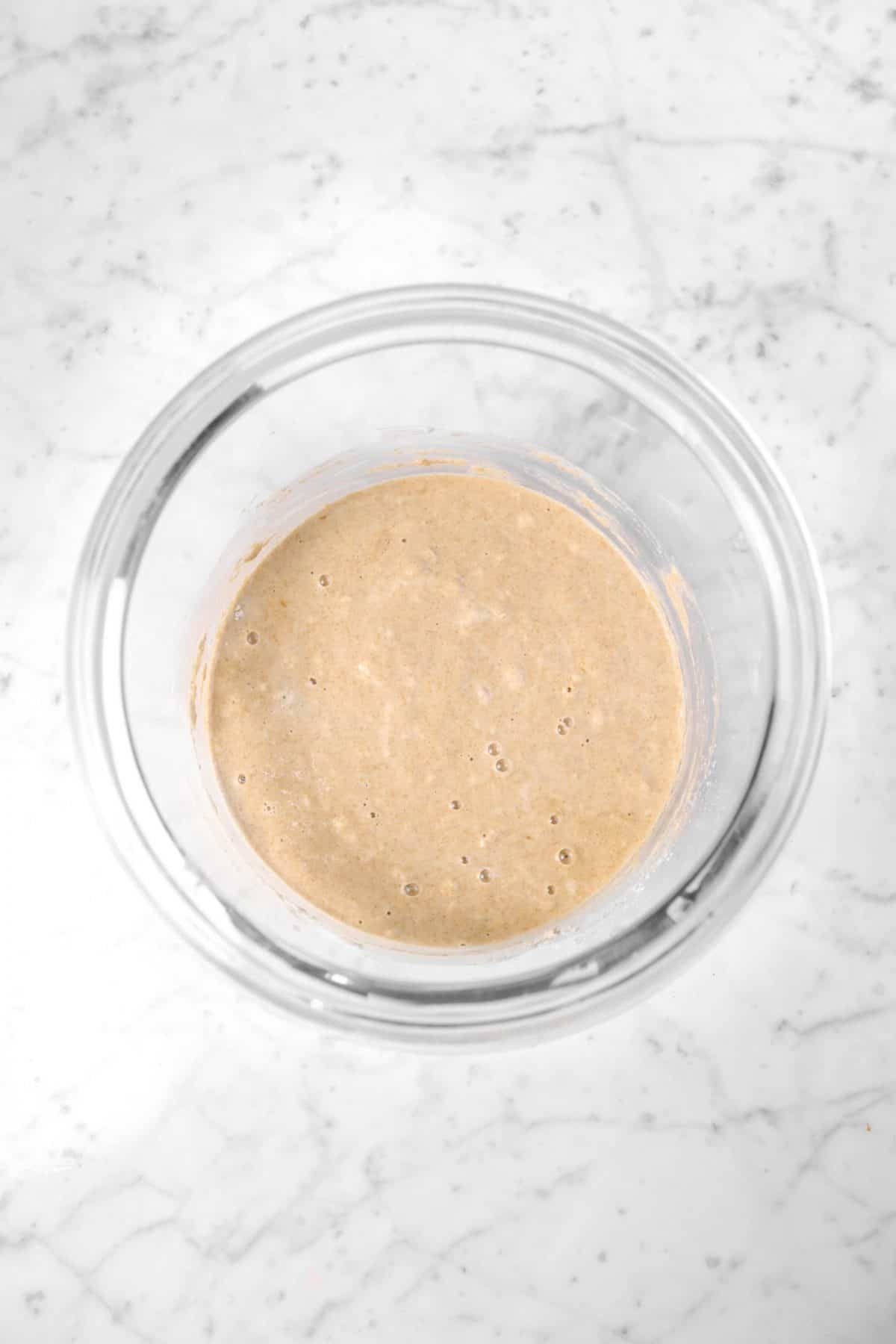
Only three more days! Now, for the next three days, just add flour and water. Always let it sit out on the counter overnight!
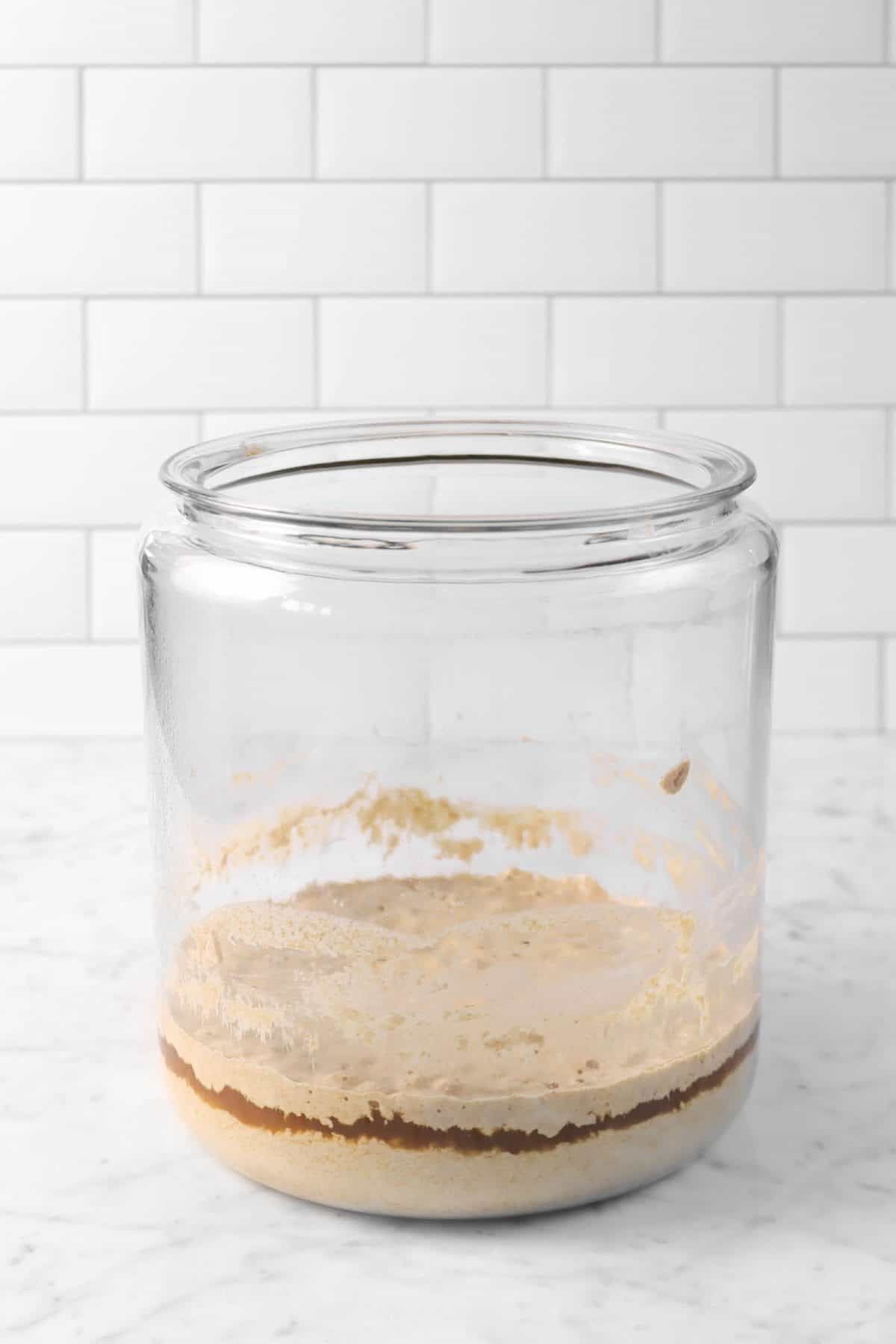
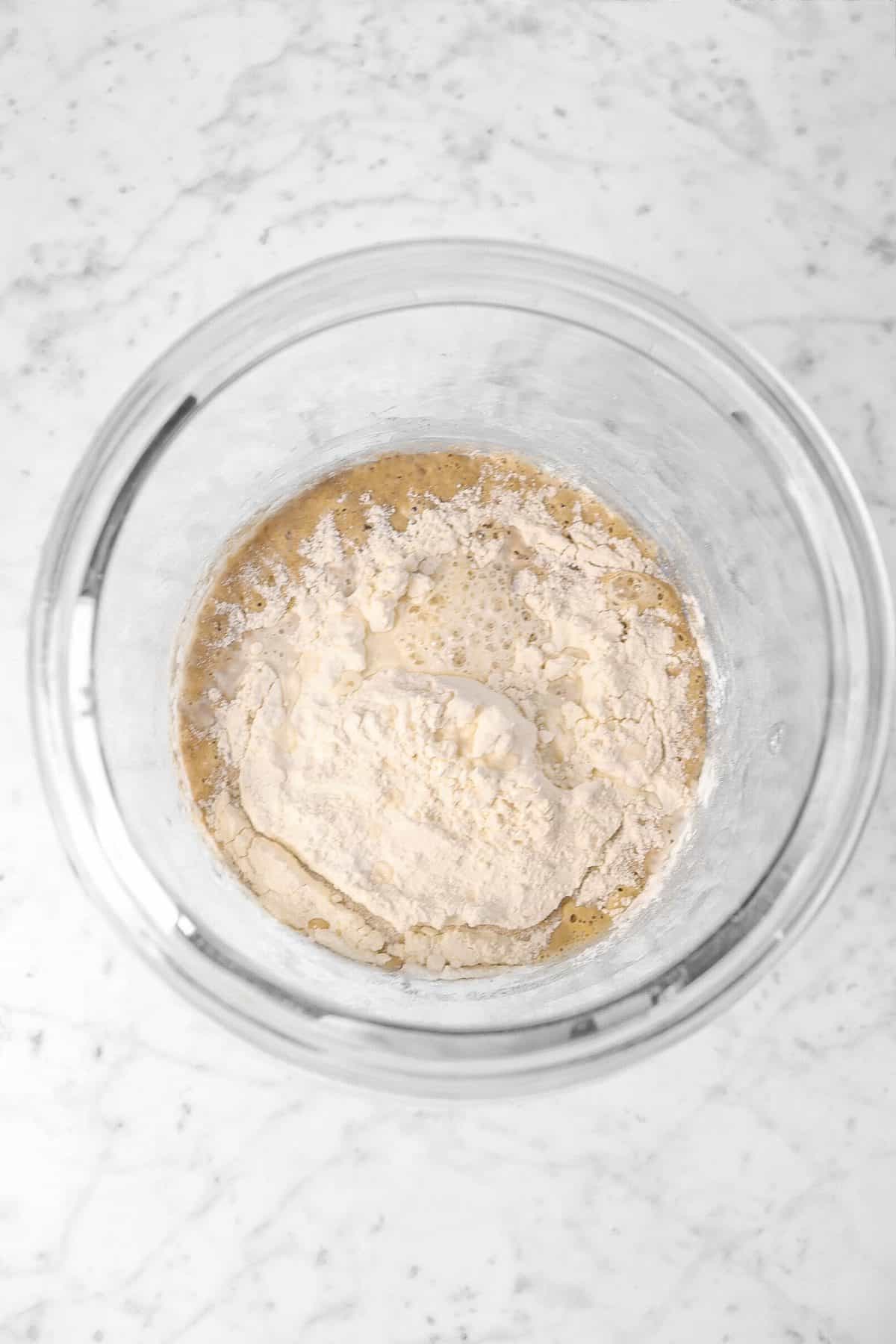
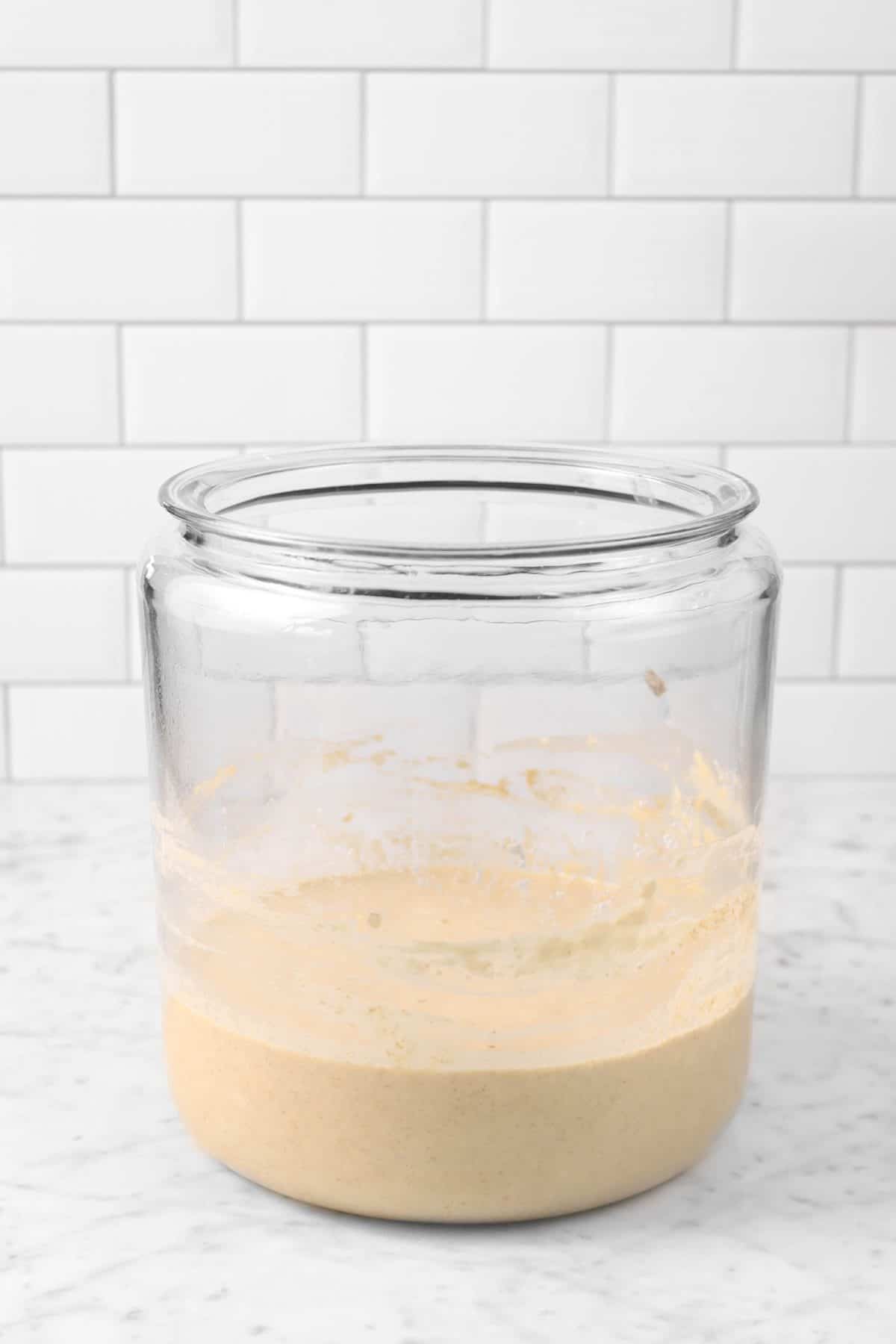
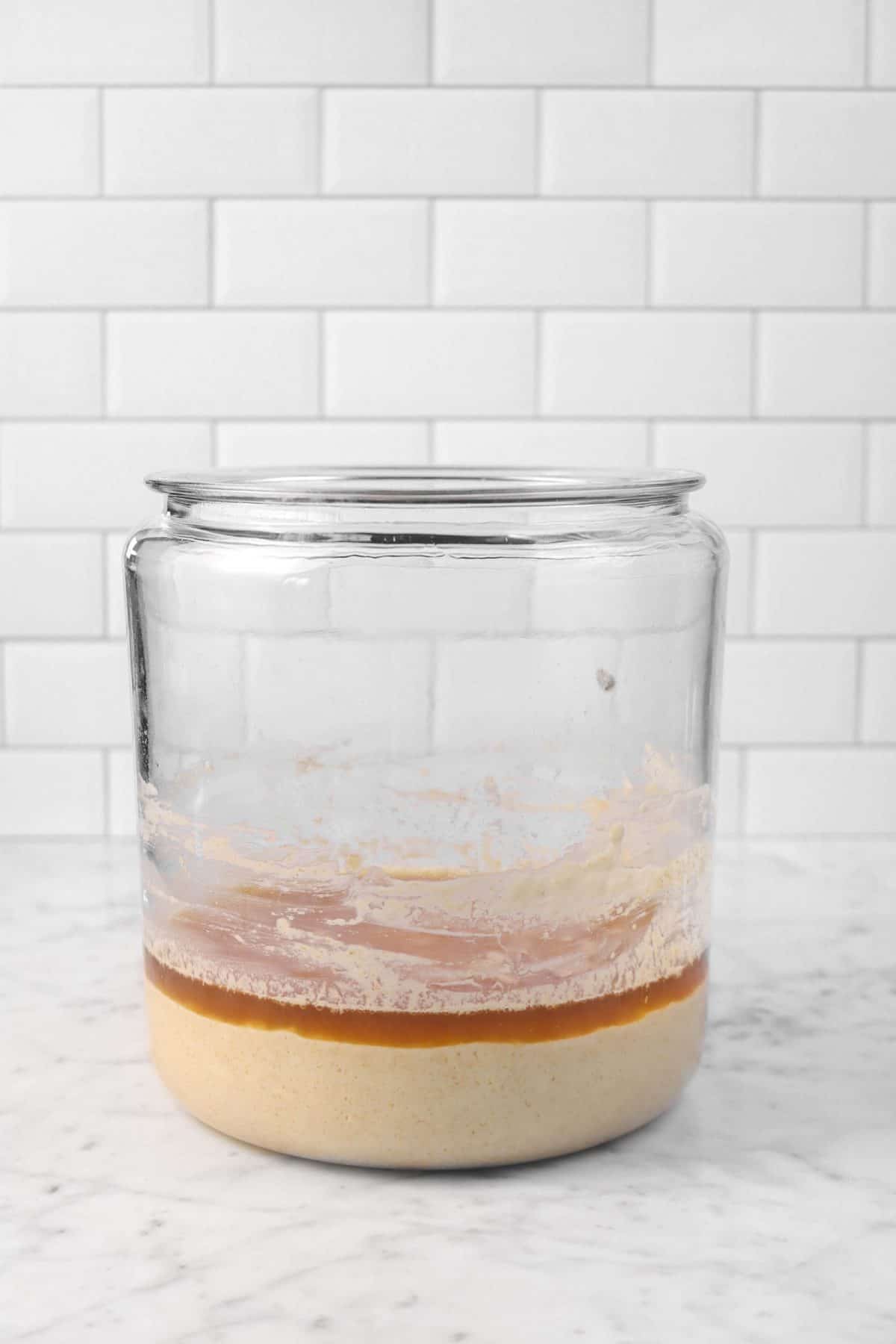
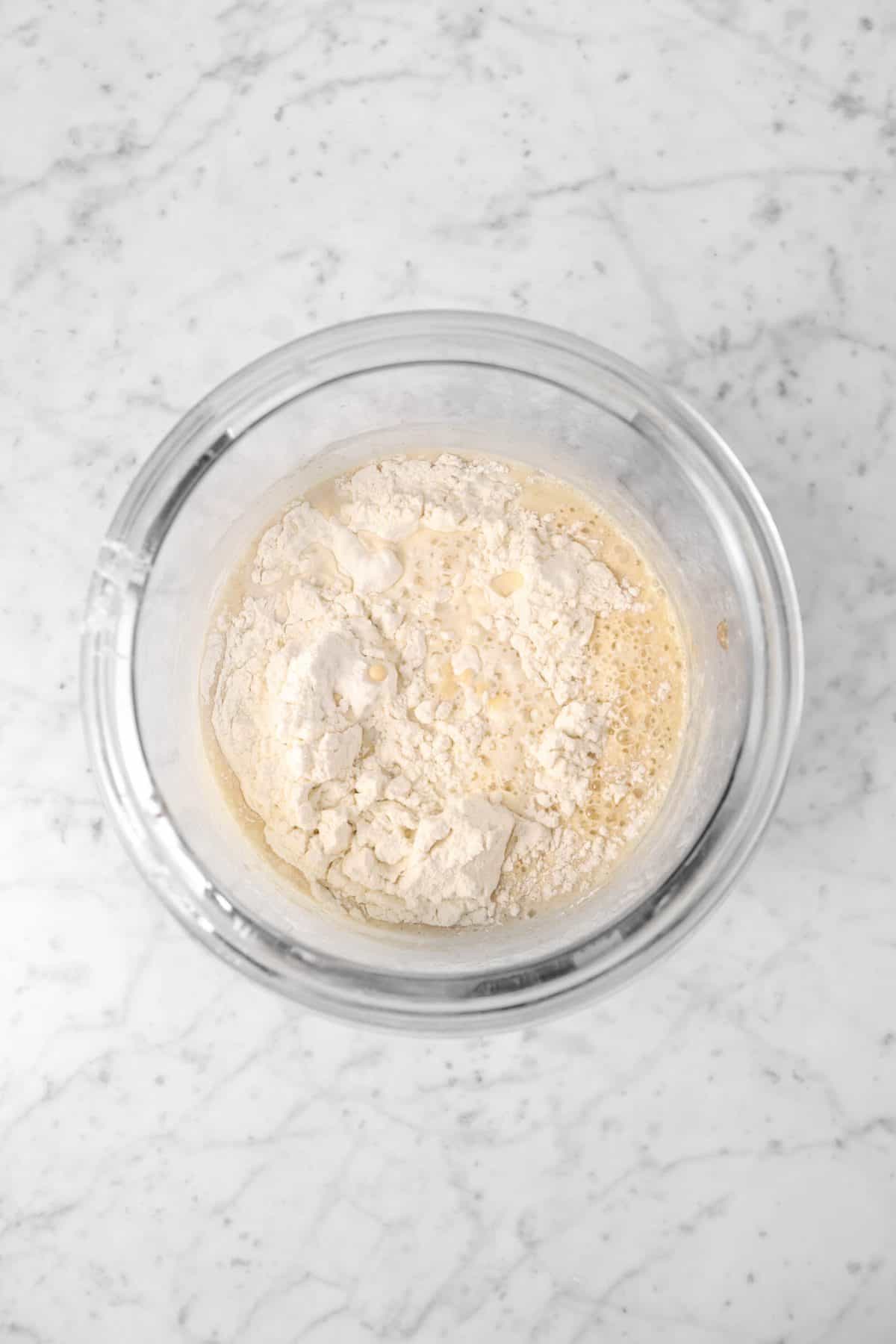
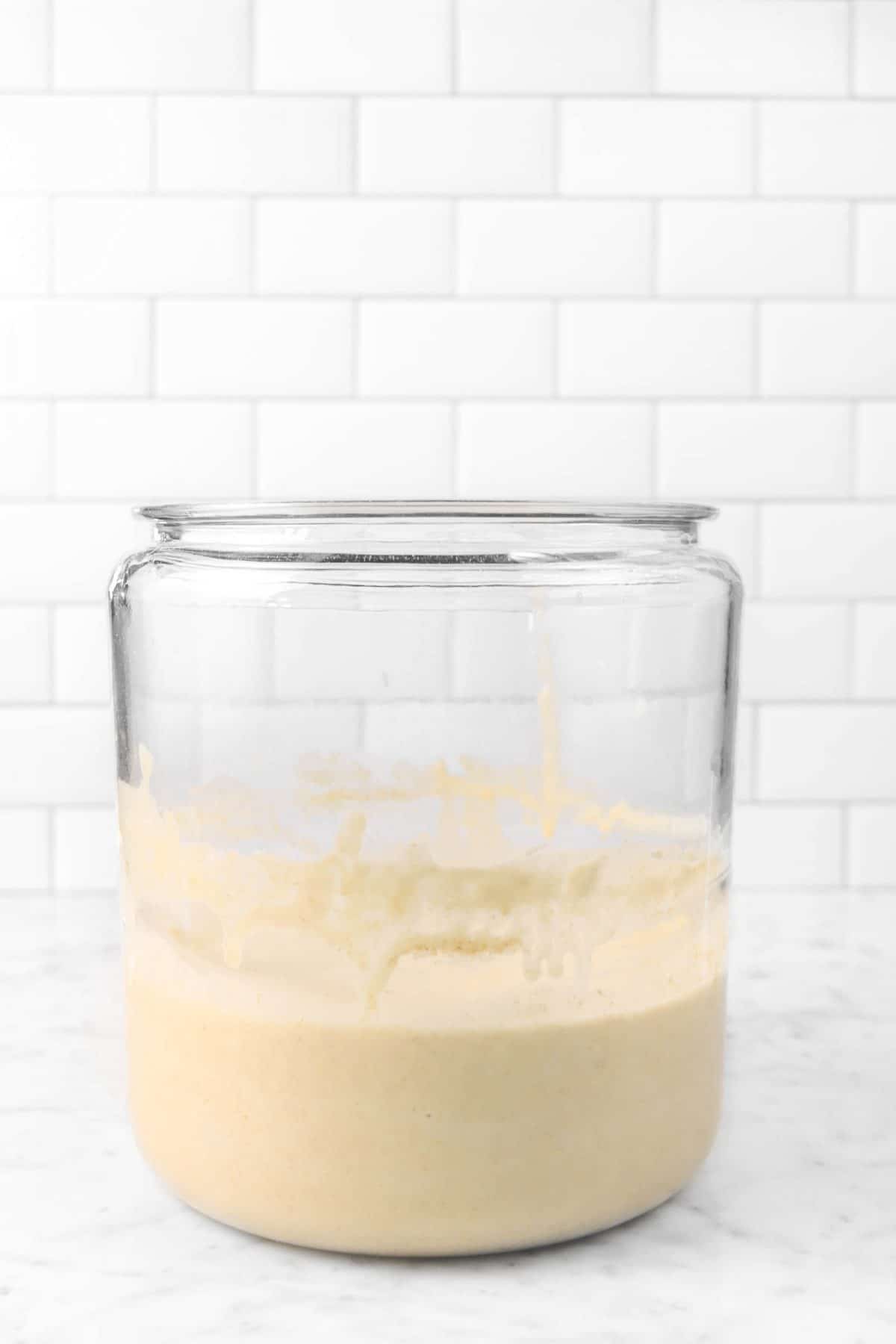
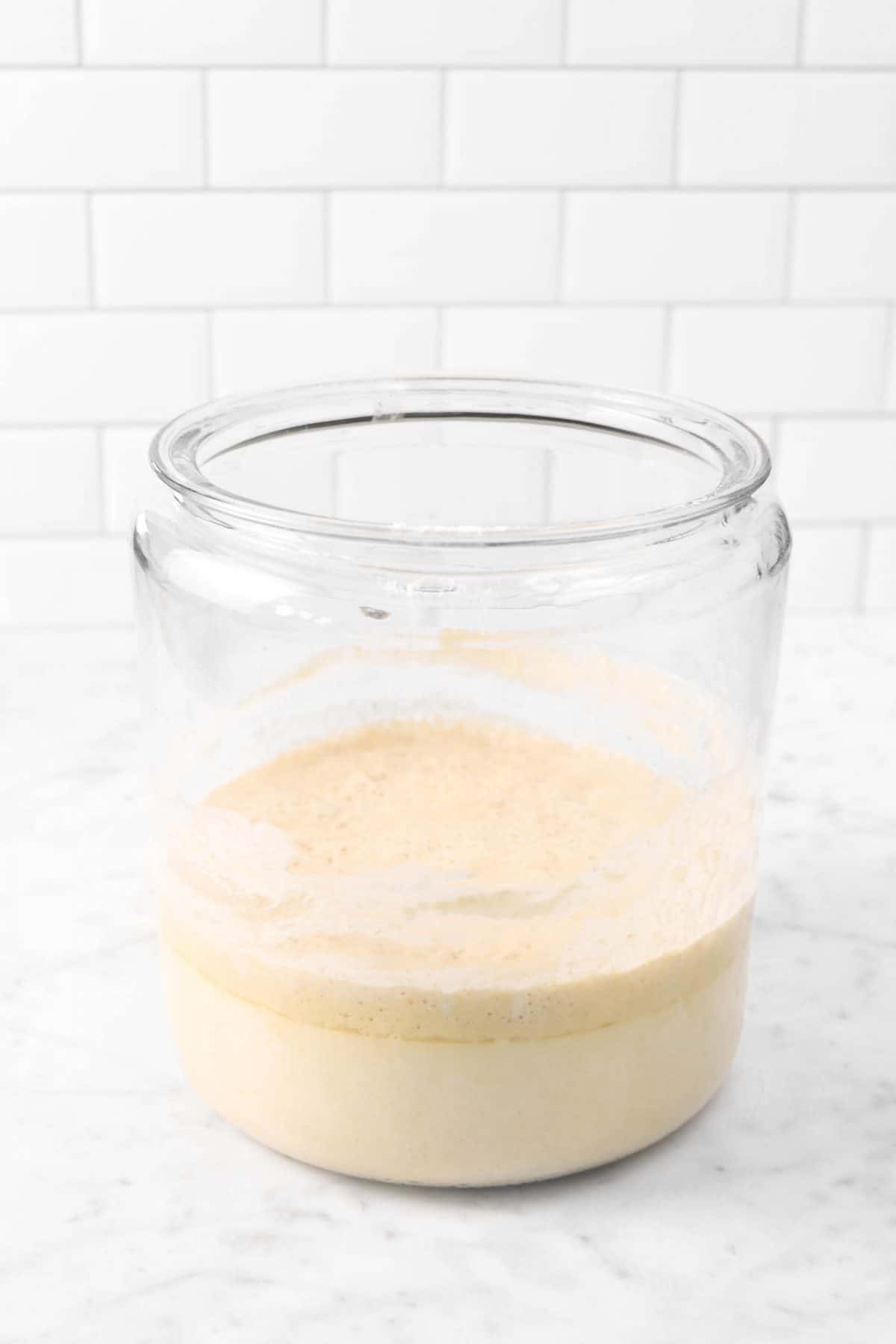
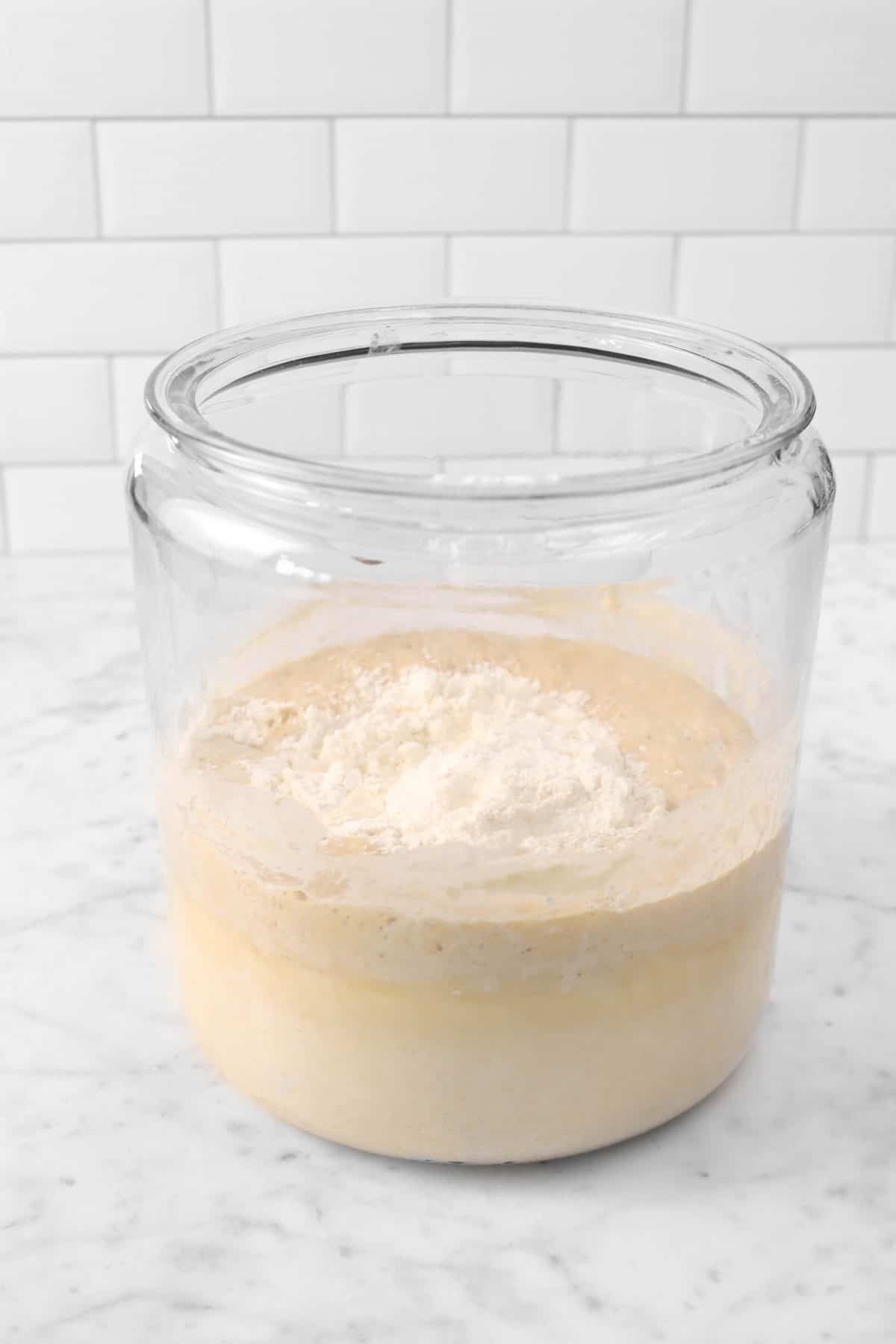
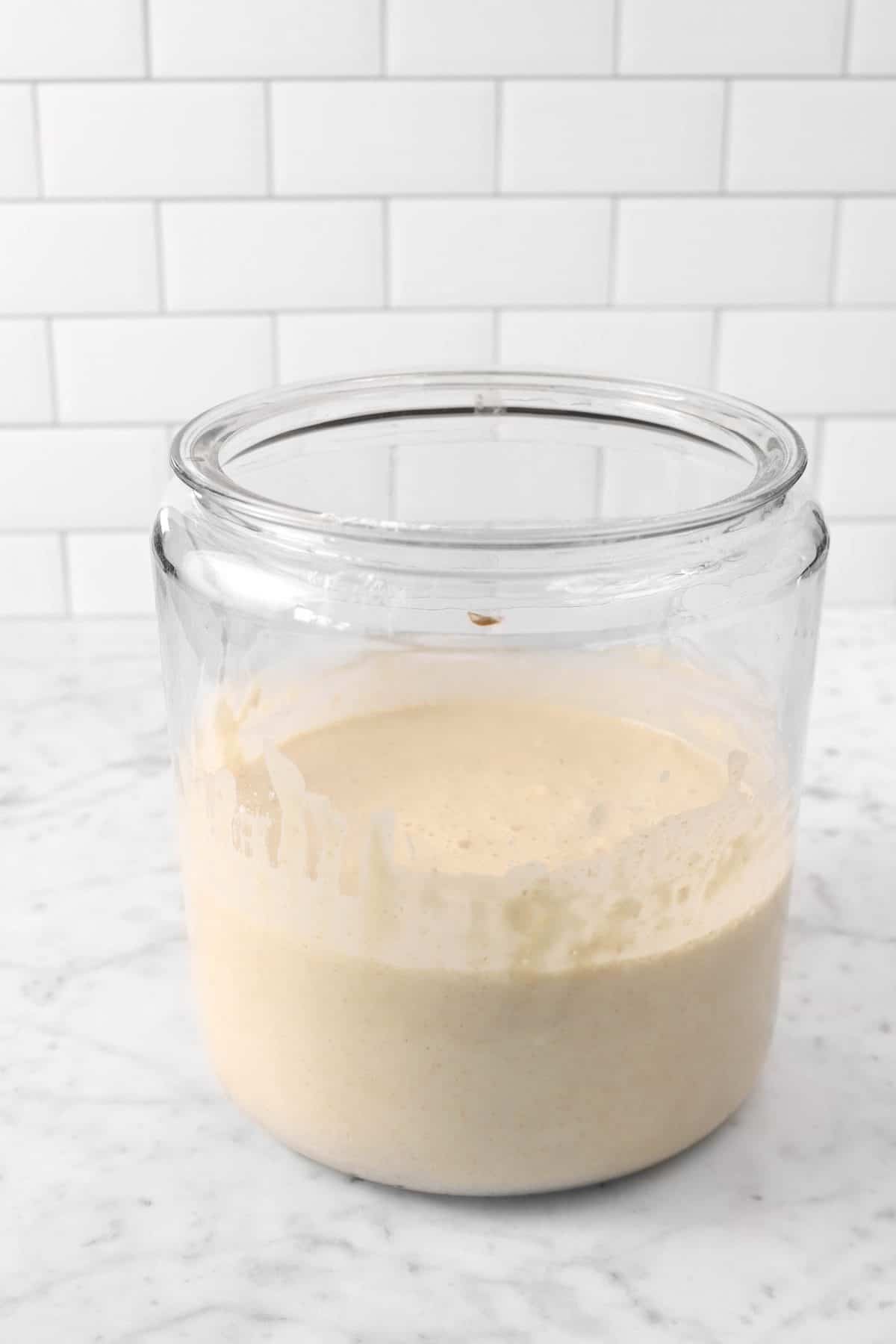
And you’re done! You now have your very own sourdough starter.
How To Take Care of My Sourdough Starter
It’s actually very easy! Sourdough is very forgiving (thank goodness!). Starting at Day 5 after you feed the starter, let it ferment for an hour or so at room temperature, then put it in the fridge. The next day, an hour or two before you are ready to begin baking, remove your starter from the refrigerator. This allows it time to warm up a bit and come to life again. It should be bubbly when you use it!
After you finish using it, pour a little more off if you haven’t used at least 2 cups; feed it again, and return it to the fridge!
FAQ’s and Troubleshooting
If your starter is runny, it’s because it has eaten through all the flour you fed it with. Stir it, pour some off, and feed it again! Let it ferment for a hour or so, and put it in the refrigerator.
If your starter is separating, it’s because it’s gone way too long without feeding! The clear liquid on top is actually pure alcohol, but don’t worry! It’s easily fixed. Pour the liquid off the top, stir the starter and pour some out, feed the remaining starter, leave it out for an hour or so, and return it to the refrigerator. It will take a couple of days of feeding to restore that sweet yeasty smell and be ready to bake again.
Technically, no. It actually doesn’t. In professional kitchens, starter is kept at room temperature and fed on a schedule based around their baking schedule. That means it needs to be fed every few hours, and there is someone on every crew who is responsible for doing that!
However, in a home kitchen where you may not be baking every day, it’s best to refrigerate it. Refrigeration slows down the feeding schedule! How cool is that?
The grey liquid on top of your starter is called hooch. It is pure alcohol. Make sure you pour it off before you stir your starter.
You can, but you would have to feed it early, give it a few hours (4-6) at room temperature, pour off a couple of cups, and feed it again, wait another couple of hours, and then it can be used. It really is much easier just to wait for day 6.
Wait until it’s bubbly. It will take 2-4 hours depending on the temperature in the room.
If you are not in the process of building your starter, then it has eaten through all its food. Depending on how depleted it is, it might take a couple of feedings to get it back going.
If you are not seeing any bubbles by the time you get to day 4, pour it out and start again.
It depends on how dead it is. If you’ve left it sitting on the counter for 6 months without feeding it, it’s dead. If you’ve not fed it for a few days, it can probably be revived. Though, if you have been refrigerating it, you have a lot more leeway. Refrigeration slows down the process. I’ve personally gone 2 or 3 months in the refrigerator without feeding mine and been able to revive it without a problem.
About every 6 months, I like to feed it with whole wheat flour for one of its feedings. It really peps it back up.
A healthy starter should have a sweet, yeasty smell.
What To Make With Sourdough Starter
Now that you have your starter, you may be wondering what now? Well, the wonderful thing about sourdough (and it’s discard!) is just how many recipes you can mix it into. Here are a few of our favorites to make with our starter.
- No Knead Sourdough Bread
- Sourdough Biscuits
- Sourdough Waffles
- Soft Sourdough Pretzels
- Fluffy Sourdough Pancakes
- Sourdough Hamburger Buns
+ So many more!
Substitutions
- If you don’t have barley malt, feel free to use honey instead.
Looking for more recipes like this? Here are a few you may like:
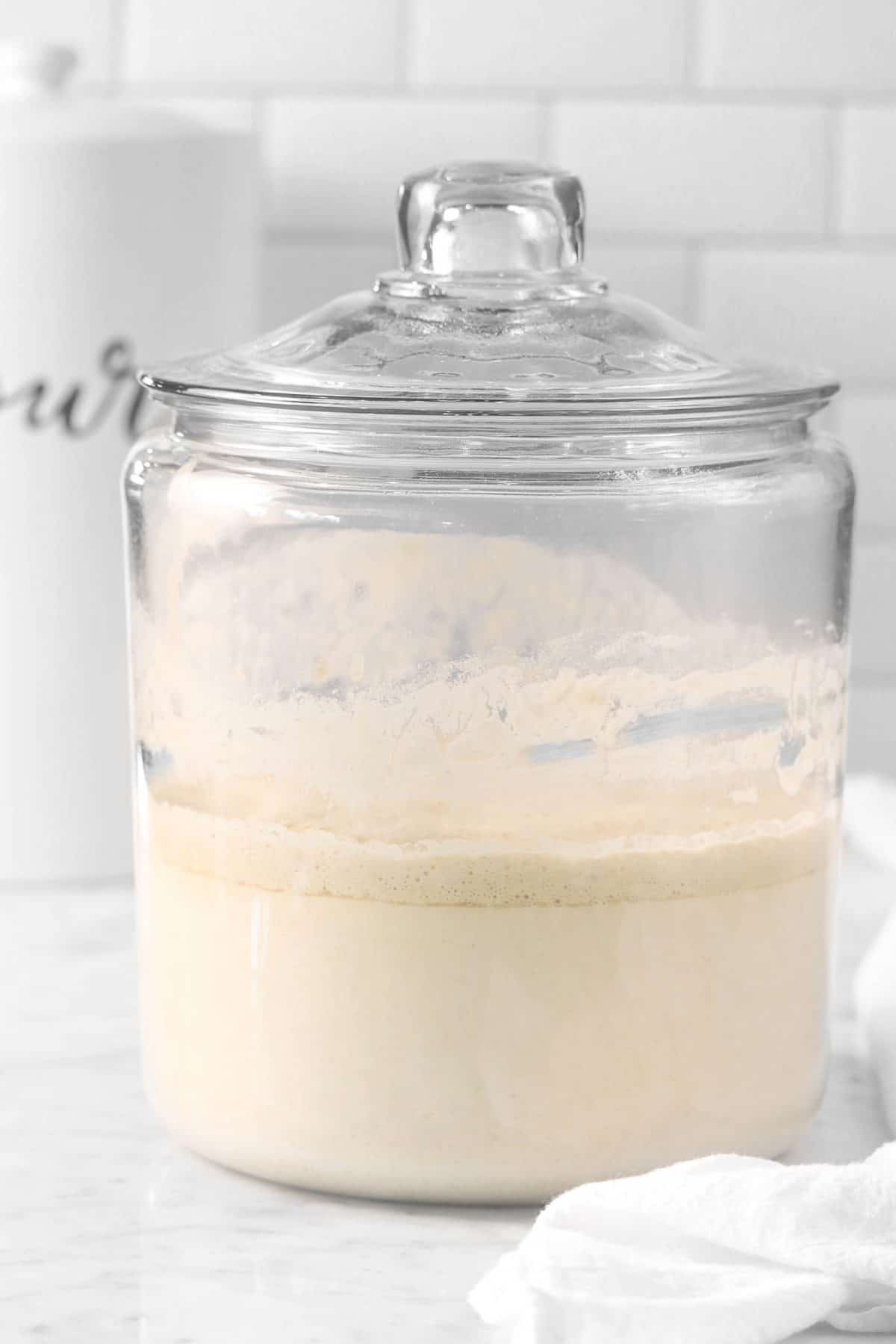
Expert Tips
- A new starter doesn’t have as much sourdough flavor as an older starter, but it’s still really good – and so much better than anything you can buy!
- Keep your starter in a glass container with a loose fitting lid for the best results. Sourdough does not react well to stainless steel!
- Sourdough will taste different in different parts of the country, based on the type of yeast in the air. If you move and take your sourdough starter with you, the flavor will change based on the airborne yeast in your new location.
- Sourdough is very forgiving. It can come back to life from almost anything that happens, if you’re patient and tend to it properly.
- About every 6 months, I swap the bread flour in one feeding out for whole wheat flour. It really helps to revive the starter and give it some kick.
When you make this recipe and if you find this helpful, please leave a comment down below! We love hearing from you and answering any questions you might have! Also, be sure to tag us on social media and hashtag it #BakersTable.
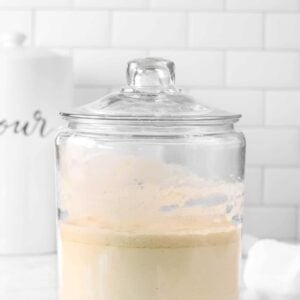
How to Make a Sourdough Starter in Five Days
Ingredients
Day 1
- Clean glass jar
- 1 cup whole wheat flour
- ¾ cup water
- 1 Tablespoon barley malt or honey
Day 2
- 1 cup bread flour
- ¾ cup water
- 1 teaspoon barley malt or honey
Day 3
- 1 cup bread flour
- ¾ cup water
Day 4
- 2 cups bread flour
- 1 ½ cups water
Day 5
- 2 cups bread flour
- 1 ½ cups water
Instructions
Day 1:
- Combine flour, water, and malt.
- Cover jar with a loosely fitting lid or plastic wrap.
- Set in a warm, draft free place for 24 hours.
Day 2:
- Uncover jar and stir ingredients.
- Stir in flour, water, and malt.
- Cover jar again and set back in a warm, draft free place for 24 hours.
Day 3:
- Uncover jar. There should be a little bubbling in the mixture.
- Mix.
- Stir in flour and water.
- Cover jar again and set in a warm draft free place for 24 hours.
Day 4:
- Uncover jar. There should be more bubbles, and the mixture should be starting to smell sweet.
- Stir together.
- Add flour and water and stir together.
- Cover again and place in a warm, draft free place for 24 hours.
Day 5:
- Uncover jar. Mixture should be bubbly and have a sweet aroma.
- Stir together, then pour off half the mixture.
- Add flour and water. Stir.
- Cover again and place in refrigerator.
Notes + Tips!
- Healthy sourdough starter has a sweet, yeasty smell.
- A new starter doesn’t have as much sourdough flavor as an older starter!
- Always use a glass container with a loose fitting lid to keep your starter in.
- Sourdough does not react well to stainless steel!
- Sourdough tastes different in different parts of the country, based on the type of yeast in the air. If you move and take your sourdough starter with you, the flavor will change based on the airborne yeast in your new location. Crazy, right?
- You can use sourdough starter for a variety of recipes, not just bread!
Tools You May Need (affiliate links)
Nutrition
Nutritional information is only an estimate. The accuracy of the nutritional information for any recipe on this site is not guaranteed.
– Still Hungry? –
Here are a few recipes may like!

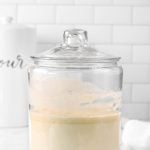
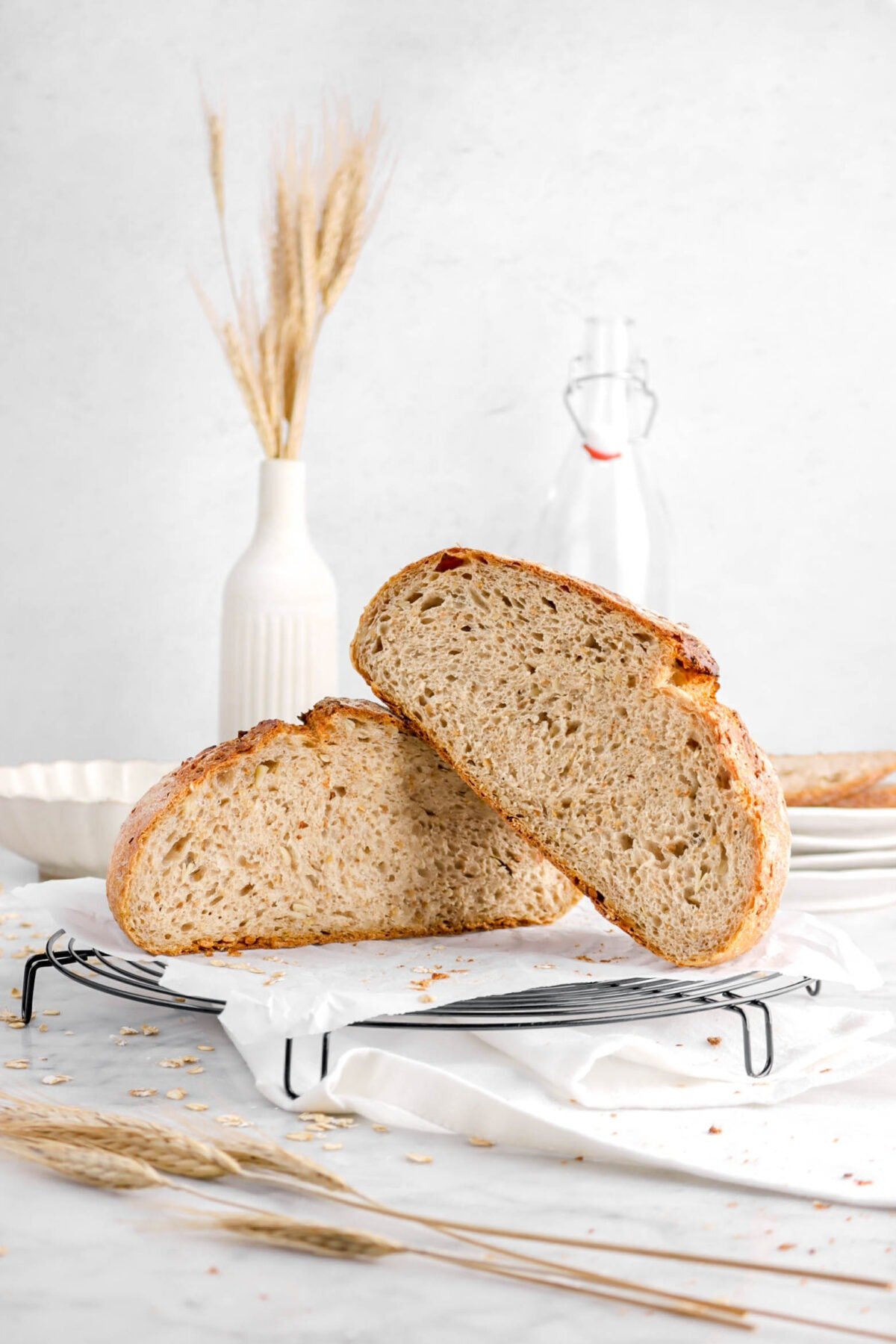
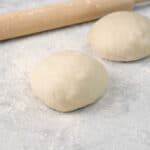
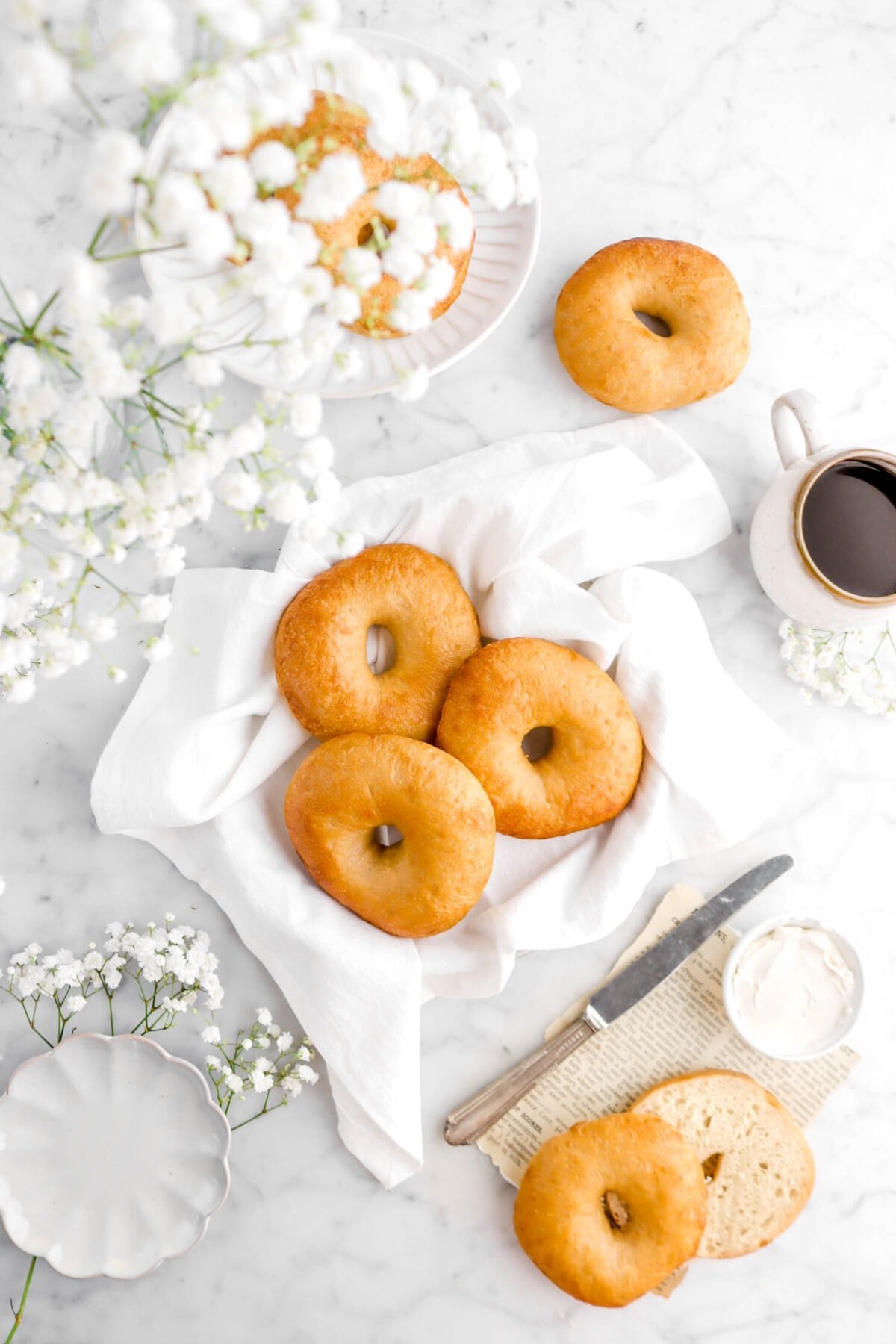

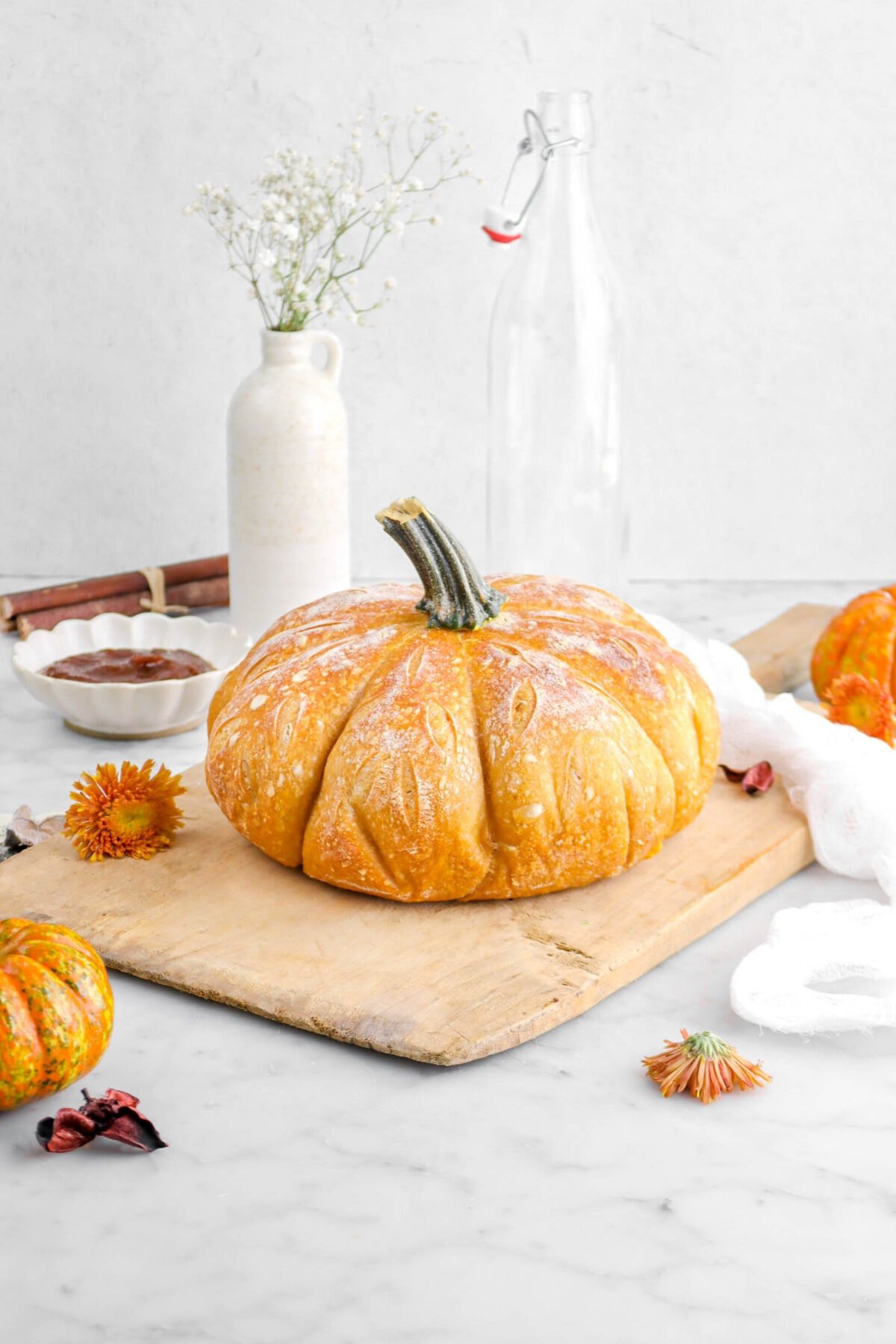
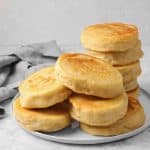
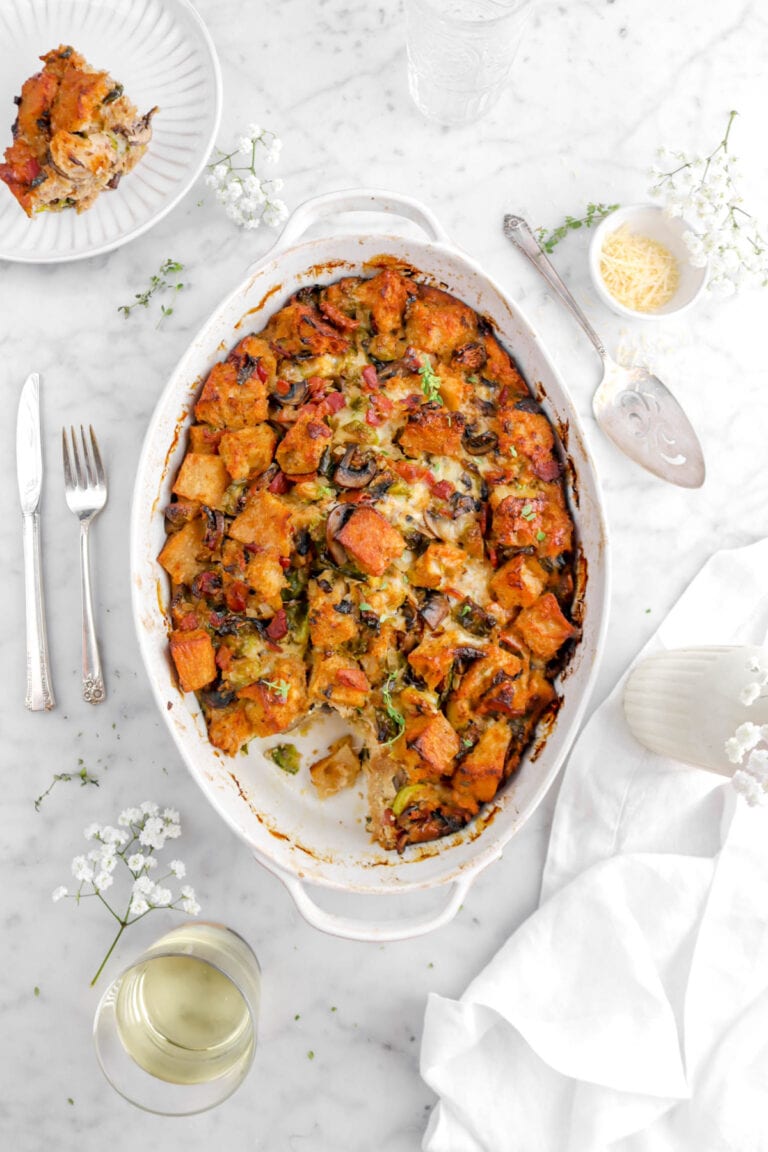
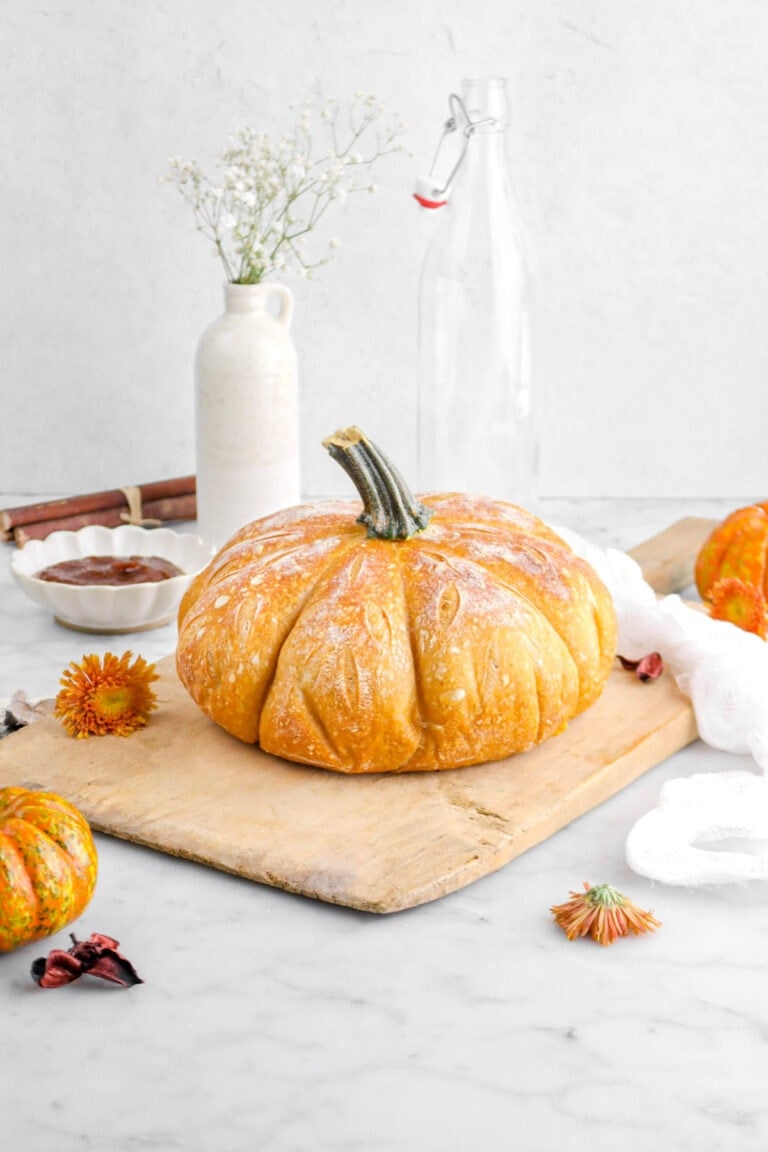
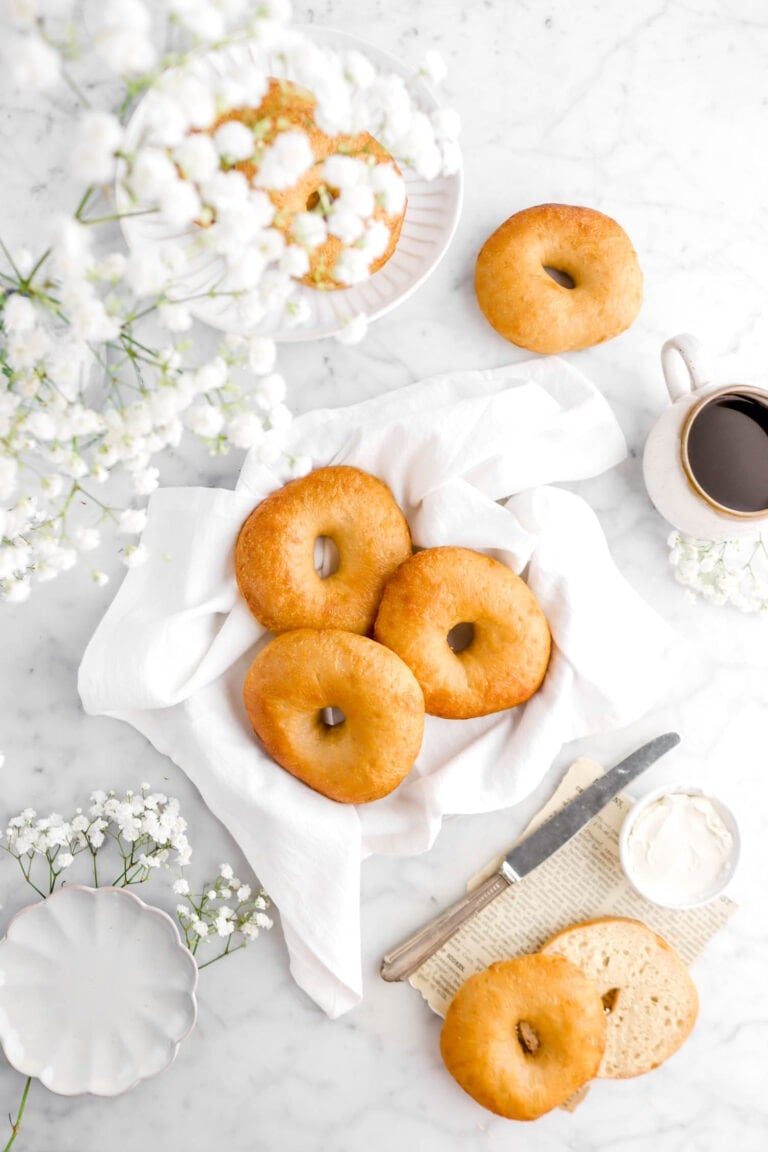
When you say pour off a certain amount do you toss that in the trash, feed it , or use it? I am confused with that.
Hi Carla! If you haven’t fed your starter in a while, throw it out. If you’re starter is nice and healthy (bubbly, sweet-smelling), use it to bake with. Let me know if you have any other questions.
Can you use almond flour for this? Would it be the same amounts?
Hi Carla! Almond flour will not work. If you’re looking for gluten free, you can use rice flour; but it is very difficult to do. I hope this helps.
Hi am new to sourdough made your starter and it’s currently in the fridge .Now I’m at a loss as to what to do next Not sure if I missed something but please advise as to next steps for baking bread. Thanks
Hi Marsha! You need to be sure you feed it for a couple of days before baking so that it regains its strength and has a pleasant flavor. To do that, pour off 2 cups of the starter and feed it with 2 cups bread flour and 1 1/2 cups water. Put it back in the fridge between feedings. Set it out and let it ferment for 3 or 4 hours before repeating. The day you are planning to cook, set the fed starter out about an hour or so ahead of time (to take the chill off it and let it start to bubble). You can tell if it’s ready to use by dropping a bit in a glass of water. If it floats, you’re good to go. If it sinks, let it sit a bit longer. Let me know if you have any other questions.
So I didn’t read how much to add every day, so I added flour, honey and water everyday it was 1 tablespoon of honey, 3/4 cups of water and 1 cup of flour, I’m on day 5 and it smells kind of like cheese is it garbage now? Or can I still use it.
Hi Mergz! Personally, I would toss it and start over, making sure you follow the directions this time. Let me know if you have any other questions.